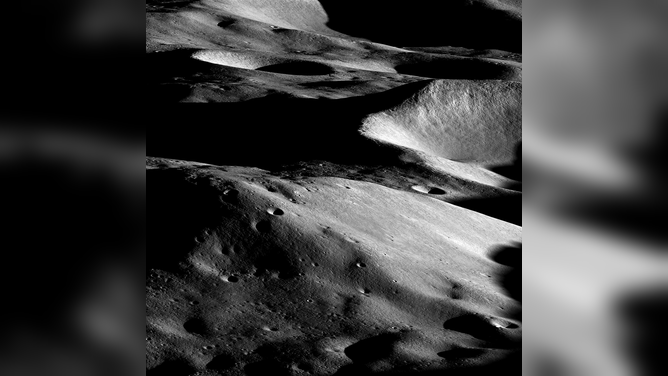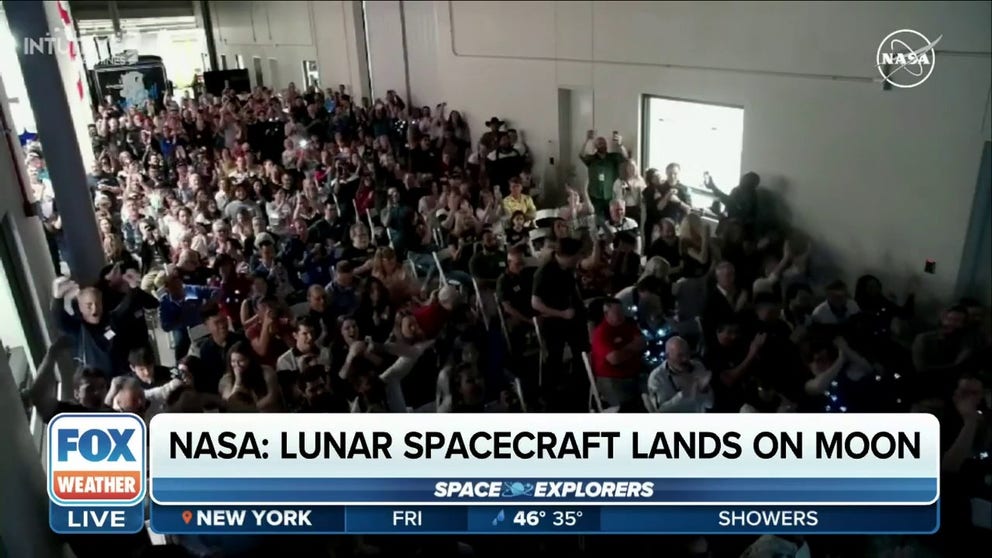Intuitive Machines returns America to Moon’s surface for first time since 1972
The first American Moon landing since Apollo 17 marks a historic achievement in private spaceflight. The Nova-C lunar lander known as Odysseus landed near the Moon’s South Pole on Thursday.
Spacecraft lands on Moon for first time since 1972
America returned to the Moon on Thursday with the Intuitive Machines Odysseus lander touching down near the unexplored region of the lunar South Pole.
America returned to the Moon on Thursday with the Odysseus lander touching down near the unexplored region of the lunar South Pole.
While about half of all lunar landings end in failure, Houston-based Intuitive Machines is the first private company to succeed, also marking the first U.S. Moon landing since the final Apollo mission in 1972. This was the first successful mission as part of NASA's Commercial Lunar Services Payload (CLPS) program. Another commercial lunar mission by Pittsburgh company Astrobotic failed to reach the Moon last month.
The Nova-C lunar lander arrived near the Moon’s South Pole on Thursday at 6:23 p.m. ET. Flight controllers confirmed that Odysseus was upright and sending data two hours later, following communications troubleshooting.
"Odysseus is alive and well," Intuitive Machines said Friday morning on social media. "Flight controllers are communicating and commanding the vehicle to download science data."
The company said the lander has good telemetry and solar charging as they continue to learn more about the vehicle’s specific location and overall health.
Intuitive Machines lands Odysseus Moon lander on lunar South Pole
Houston-based company Intuitive Machines said it successfully landed its Odysseus lander on the Moon. The touchdown marked the first private Moon landing and the first American mission in more than 50 years.
Intuitive Machines CEO Steve Altemus will speak to the media at 5 p.m. ET Friday to discuss more on their historic moment.
"We can confirm without a doubt our equipment is on the surface of the Moon," Intuitive Machines Chief Technology Officer Tim Crain said.
Intuitive Machines teams had to think on their feet as the landing approached.
The lasers on the spacecraft needed for landing were not functioning but Intuitive Machines engineers opted to complete another orbit for landing and allow time to upload a patch reworking the landing system to use two lasers on NASA payloads.
The quick thinking paid off.
During its descent phase, the spacecraft guided itself to the landing area known as Malapert using the Terrain Relative Navigation camera from Redwire Space. The high-definition camera looked for a safe landing spot free of craters, boulders and other hazards. At 10 meters (about 33 feet), the spacecraft locked in on its landing site.
The hazardous landing required Odysseus to slow from about 4,000 mph to a velocity of about 2 mph (1 meter per second) before touching down on the Moon.
"Odysseus has a new home," the private space company stated after the landing.
Thursday's landing came just a week after SpaceX launched the Nova-C spacecraft known as Odysseus from Kennedy Space Center in Florida.
Where is Odysseus on the Moon now?
The Odysseus lander was expected to touch down about 186 miles (about 300 kilometers) from the lunar South Pole in an area known as Malapert, named after the 17th-century Belgian astronomer Charles Malapert. The area is near the lunar mountain Malapert Massif, one of NASA's lunar landing candidate sites for the Artemis III astronaut mission.

NASA's Lunar Reconnaissance Orbiter captured this view on March 3, 2023. Malapert Massif, a lunar mountain and Artemis 3 candidate landing region, is shown at lower left. The mountain's highest point looms more than 16,400 feet (5000 meters) above its base. (Image: NASA/GSFC/Arizona State University)
(NASA)
NASA and the greater space exploration industry are interested in the unexplored region of the lunar South Pole because it likely contains water ice, which can be mined for fuel and other resources. NASA paid the company $118 million to shuttle its payloads to the shadowed region.
If all systems are working, Intuitive Machines expects to provide power for its payloads for about a week before lunar night on the South Pole.
NASA CLPS Program Manager Chris Culbert told FOX Weather the six NASA payloads on the Odysseus lander will help future human missions to the South Pole.
"We have a radiation sensor that will help us measure what radiation looks like at the South Pole of the Moon," Culbert said. "That helps us prepare for future human missions to that location."
Another NASA instrument will measure how Moondust behaves near this region.
"A retroreflector, a little device that we can bounce laser signals off of that tells us exactly where the lander is on the Moon," Culbert said of the palm-sized reflective object.
"All of this is geared to helping us learn more about the environment and prepare for future human missions to the South Pole," Culbert said.
In the coming years, more than a dozen other CLPS missions will launch NASA science to the Moon.

